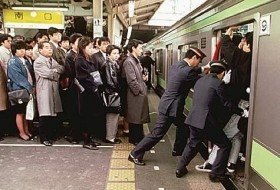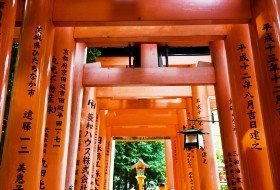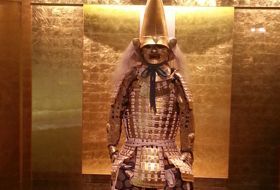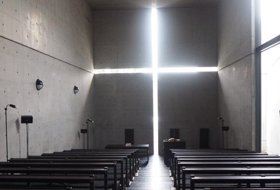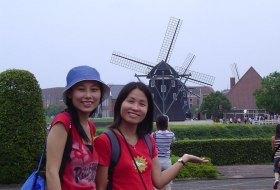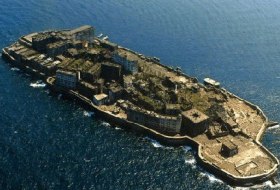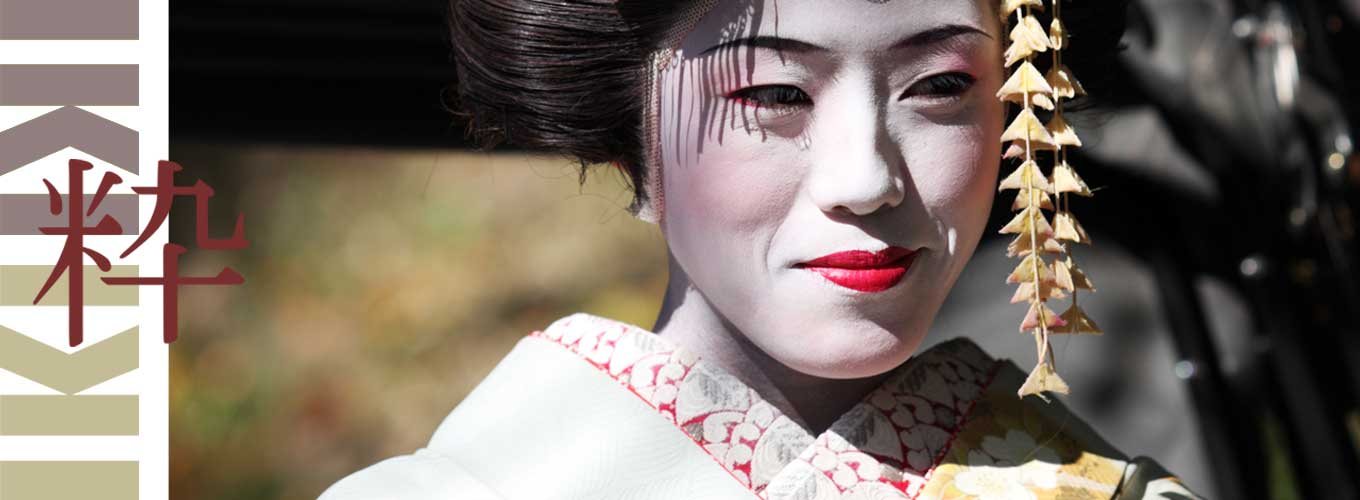
Japan has it !!
Japan’s long period of isolation kept it closed off from much of the world. Japan has developed its own distinct culture, customs, manners, rarities, techniques and living circumstances. The big cities in Japan are world famous. Every Japanese city has a different character and is weirdly unique. Below a few Japanese cities are being highlighted.
Tokyo has it all!!
Tokyo has 165 Michelin restaurants
Paris has always been the undisputed culinary capital of the world with the highest number (141) of Michelin star restaurants. New York City is home to a total of 93 Michelin stars, including five three-star selections. In 2007 Michelin went for the first time to Japan. Already in the first year Michelin the Japanese capital was awarded 191 stars, divided over 165 restaurants. Tokyo reigns supreme when it comes to Michelin stars, blowing all other cities out of the water with an astonishing 314 total stars in 2018, 173 more than closest rival Paris.It’s official. Tokyo is belly heaven.
Michelin demands that food quality, the quality of ingredients and chef technique are exquisite.That doesn’t make a Japanese housewife, and for sure not a Japanese chef, nervous. Japanese food is naturally known for its excellent quality and is always presented in a scrupulously clean way.
Subway pushers in Tokyo Shinjuku
No kidding! Tokyo subway actually employs uniformed staff, known as “pushers’, who push passengers onto the subway. This subway pushers are mainly at work in Tokyo’s ultra busy Shinjuku Station during the morning and evening rush hours. This station was used by an average of 3.64 million people per day in 2007, making it, by far, the world’s busiest transport hub. No need to be afraid of getting trampled.These white glove-wearing personal actually pushes people into the train, so the doors can be shut.
Normally pushing or cutting the line is absolutely ‘not done’ in Japan. Anyone who has ever taken a train in Japan will have noticed that the Japanese have turned queuing into an art form. Well-mannered travellers wait in perfectly formed lines for the train carriage to open. And when the doors part, the queuers wait for the last passenger to disembark before they get in.
Cosplay on Sunday in Harajuku Tokyo
Every country has his own cults and groups of teenage youth, who rebel against the established order by dressing differently, just think of punk, goth, and hardrockers.
To see Harajuku cosplay in full force, visit Harajuku on a Sunday, when you might see young Japanese dressed as anything from Little Bo Peep to anime characters straight out of a manga, cartoon or game. Rock bands are playing in the streets, whereas yuppies dress up in the newest fashion outfits. Besides cosplayers, there are the sugar sweet Lolita Girls, dressed in Victorian dresses, and the Gyaru Girls.
Japan has a unique culture with a very strict code of etiquette and a complex web of social rules and traditions. In their free time they look for an outlet that can take bizarre shapes. Definitely go and have a look at the show, it’s absolutely worthwhile.
Amsterdams Central station in Tokyo
On one side the design of Tokyo’s central station is based on Amsterdam’s central station.The copy is of course not as great as the original, but it’s a good indication of the close ties between The Netherlands and Japan.
Relations between Japan and the Netherlands date back to 1609, when the first formal trade relations were established. For a long time the Dutch were the only foreigners allowed to trade in Japan.
If you are interested in the history of the VOC, you will have to travel to Nagasaki.Dejima was a man-made island in the port of Nagasaki, constructed in 1636 to segregate Portuguese residents from the Japanese population and control their missionary activities. A few years later, the Portuguese were expelled from Japan, and the Dutch Trading Station, formerly located in Hirado, was moved to Dejima. The Dutch were restricted to Dejima during Japan’s two centuries of isolation as the only remaining Westerners allowed in the country. Not far from Nagasaki you can find the “Ten Bosch House”.
Robot dogs
Japan is the country of robots. Entire car factories run day and night on full automatic. Japan designs robots that can hardly be distinguished from humans. Some years back the Sony robot dog Aibo was a real hype. Aibo is just like a real pet friend; he can play, sing, dance, play football and make pictures and he loves to be petted. The robot pet dog never really broke through though. In Tokyo’s Sony Store, there is a good chance that you can still cuddle him. You will see: he reacts to being touched. In the Sony store you will find all the latest gadgets, even when Aibo will be retired.
World’s biggest fish auction
In Tokyo you can visit world’s largest wholesale fish and seafood market. Already early in the morning this buzzing commercial market is in full swing with electric carts whizzing around. The auctions start around 5:20 am.Prior to the auction the tuna buyers test and assess the frozen tuna to allow them to choose which fish they will bid on and at what price.The tail section of each tuna is cut and a small section is peeled back to expose the flesh of the fish. Buyers, armed with small fish hooks and flash lights, examine the tuna for determining the quality and hence the price they intend to pay. Then the bell rings and the auction starts.The bidding process for buyers is complicated and frantic to witness. It often takes only 15 minutes for all the tuna in the first auction to be sold ! When the auction is over, swing by one of the many the restaurants surrounding the fish market for a delicious sushi breakfast. The local restaurants are typically open from 5:00. This is one of the best places in Tokyo to enjoy fresh seafood.
World’s biggest metropolis
The Greater Tokyo Area is the most populous metropolitan area in the world with an estimated population of 38,001,000. Tokyo City was dismantled in 1943 during World War II. The special wards are 23 municipalities that together make up the core and the most populous part of Tokyo. Greater Tokyo Area encompasses seven prefectures: Gunma, Tochigi, Ibaraki, Saitama, Tokyo, Chiba, and Kanagawa.
Yokohama is the second largest city in Japan by population (3.7 million), after Tokyo, and the most populous municipality of Japan.Yokohama quickly grew from a small fishing village into one of Japan’s major cities.
Liverpool had The Beatles, Tokyo still has them
Beatles music fans in Tokyo are spoiled for choice, with not just one, but two Beatles covers bars. These are theme live houses, with Japanese Beatles look-a-like bands playing covers all night long. Abbey Road and the Cavern Club are located only a few hundred meters from each other, and are both packed to the eyeballs every night. Up to you, which one is the better choice for a night out?
Kyoto has it all !!
Kyoto, capital for more than 1000 years
Kyoto is best known in Japanese history for being the former Imperial capital of Japan for more than one thousand years. Traditionally, the home of the Emperor is considered the capital. From 794 through 1868, the Emperor lived in Kyoto, Japan’s official capital. Nowadays, Kyoto is still known as the cultural capital for preserving many Japanese arts and traditions. In Kyoto, the Japanese Emperor didn’t have much political power, but his presence had a big impact on the cultural tradition of Kyoto. After 1868, the seat of the Government of Japan and the location of the Emperor’s home was moved to Tokyo.
Kyoto’s temples and shrines
Visiting temples and shrines is a must-do when traveling in Kyoto.The Golden Pavilion, also called Kinkakuji, is a Zen Buddhist temple and one of the most popular buildings in Japan, attracting a large number of visitors annually. The awe-inspiring sight of the richly decorated golden temple that seems to float over the mirror pond is worth a visit to Kyōto alone. In combination with the beautiful surrounding gardens, it looks almost surreal.
The Fushimi Inari Shrine is an important Shinto shrine in southern Kyoto. It is famous for its thousands of vermilion torii gates, which straddle a network of trails behind its main buildings. The trails lead into the wooded forest of the sacred Mount Inari. As the crowds disperse in the late afternoon, the shrine’s most favourite residents, cats, come out from hiding.
Kyoto for food lovers
Kyoto is an excellent destination for whoever wants to learn more about Japanese cuisine.The area is also famous for green tea (especially Uji tea) and pickled vegetables. To really learn to appreciate Kyoto’s green tea culture and drink powdered green tea in style, it’s a good idea to attend a tea ceremony. Iki travels can arrange this for you. No patience for a tea ceremony? Don’t worry. You can have a taste of the old Kyoto in the Nishiki market. With over 100 stalls and shops lining the covered street, Nishiki Market offers an overwhelming choice of snacks and drinks. In summer, restaurants provide customers with outdoor seating on balcony platforms suspended over the banks of the Kamo River, where they can dine while watching the flowing river and enjoy the cool evening breeze.
Kyoto = geisha
You meet her everywhere in Kyoto: on posters, art objects, mascots. Kyoto is the heart of Japan’s geisha world although to meet a real authentic geisha you have to be really lucky. First of all, head to the Gion district, the traditional neighbourhood where geisha live.Here you may catch a glimpse of a fully fledged geisha scurrying to secret liaisons. An apprentice geisha, called maiko, can be admired at Gion Corner, a cultural centre where you can see Japan’s traditional performing arts, such as Gagaku Court Music, Bunraku Puppet Theatre and Kyo-mai dance, performed by maiko. Charmed by the beautiful kimono these ladies are wearing? In the Gion district there are several kimono rental shops, where you’ll get dressed up in a traditional kimono, complete with wig and make up. Now you can wander through the streets of Kyoto as a real Japanese lady.
Stay at a traditional house in Kyoto
If you really want to experience Kyoto, you could consider staying a night or two in a traditional Kyoto townhouse. These charming town houses are located in residential areas, giving you the impression you are living in a very special city. For more information and a first impression, click www.ikitravels.nl/japan-reizen/iki-huis-kyoto/.
Kanazawa has it all !!
Taste Kanazawa’s gold
The name Kanazawa is derived from the following legend: a peasant called Imohoro Togoro made his living digging potatoes. He washed off the gold dust from the potatoes into a well, now called Kinjo Reitaku. The name “Kanazawa” literally translates to “marsh of gold”. The well can still be visited at the Kenrokuen gardens, which are considered to be one of the three most beautiful landscape gardens in Japan.
Kanazawa is probably most well-known for is its gold leaf production. It produces 99% of the gold leaf and 100% of all silver leaf within Japan.Gold leaf is mainly used for the decoration of temples, altars and shrines (such as Golden Pavilion in Kyoto), cosmetics and food. The Hakuichi store even serves gold leaf wrapped soft ice cream (yes, the gold leaf is eatable)! Or do you prefer a bottle of sake filled with gold flakes? The Yasue Gold-Leaf Museum is definitely worth visiting. It includes detailed exhibits on how gold leaf is produced.
Kanazawa’s geisha
Besides Kyoto, Kanazawa is the only town where you have a chance to see real authentic geisha.Kanazawa is often nicknamed “Little Kyoto”. During day time, it’s unlikely you stumble upon a geisha as they wear normal dress. In the evening your chances are much higher to meet a full fledged geisha.
Chaya are ‘teahouses’, where wealthy customers would be entertained by geisha with traditional music, dancing, and drinking games. Many of these buildings have today been converted into restaurants or souvenir craft shops. The area with its labyrinth of stone cobbled streets, traditional old buildings, tea houses, ancient cafes, and shop is great to wander around and get lost.
The Higashi Chaya District is the most beautifully preserved historical area of Kanazawa. The traditional Shima Teahouse is open to the public.This well preserved tea house has now been converted into a museum, allowing tourists to see a traditional ochaya (teahouse) from the inside, including the tatami rooms and exhibits of utensils, accessories and music instruments. On select Saturdays, the Kanazawa City Tourism Association organises a geiko experience. This event includes a Japanese explanation of the teahouse, dance, taiko drumming, game, and tea with sweet.
Kanazawa Samurai
In the 16th century Kanazawa’s samurai district Nagamachi was one of the richest area in Japan, ruled by the mighty Maeda Samurai. In the former samurai district Nagamachi you can still see the residences where samurai and their families used to live. The street plan has been the same since 350 years. The area preserves a historic atmosphere with remaining samurai residences, earthen walls, private entrance gates, narrow lanes and water canals.
The Nomura house is Nagamachi’s crown jewel.Today the house is owned by the city and has been beautifully restored so that visitors can enjoy a glimpse of samurai home life. Inside you will find many family heirlooms, elegant antiques and historic artefacts, and one of the finest inner gardens in Japan. Despite the relatively small size, this lush green garden was listed as one of the three top gardens in Japan.
In contrast is the Ashigaru House. These are two carefully reconstructed houses that belonged to the families of Kanazawa’s foot soldiers. The simplicity of these homes presents an interesting contrast with the elegant residences of the high-ranking samurai.
Besides samurai residence, you visit the ninja temple built with considerable defences such as hidden tunnels, secret rooms, traps, and a labyrinth of corridors and staircases. Even though nowadays samurai and ninja are gone, Kanazawa is still an important town with many historical attractions.
Osaka has it all !!
Osaka, Japan’s Rotterdam
Osaka is Japan’s second largest metropolitan area after Tokyo boasting a population of over 3 million. It has been the economic powerhouse for many centuries and Osaka is the main port town in Japan, Because of its port and thriving industrial centre, you could call Osaka: “Japan’s Rotterdam”.
Osaka, eat ’till you drop
Osaka is known as one of the ultimate food destinations in Japan; a city with passionate food lovers and an overabundance of things to eat. Japanese even have a word for it: kuidaore, literally meaning: “to eat oneself into total ruin. To eat oneself into bankruptcy.” Osaka is so passionate about food, so much that kuidaore plays a significant part in Osaka’s history and pop culture. It’s really hard to find bad food in Osaka. Everywhere you look, there will be something to tickle your tastebuds, whether it be takoyaki, okonomiyaki or kushikatsu. It’s impossible to recommend a single restaurant, there are thousands of restaurants worth a splurge. This city never runs out of fresh ingredients, both from land and sea, and definitely not at the Kumaron market.
Osaka, Comedy capital of Japan
Merchants were the lowest class in the social ranking system in feudal Japan (9th-12th century) and were not really respected, even tough they earned good money. Osaka blossomed as a ‘town of merchants’ and you can easily imagine that laughing was utilised as a communicative means.Osaka is also called the “comedy capital of Japan”. Osaka people are generally regarded as friendlier, less formal, more honest and with a bigger sense of humor than e.g. people in Tokyo.
Osaka’s Aquarium Kaiyukan
The gigantic aquarium in Osaka, Kaiyukan is one of Japan’s most spectacular aquariums and is organised in an impressive way. Marine life is displayed in 15 tanks around a central tank – representing the Pacific Ocean – that is nine meters deep and home to a whale shark, the aquarium’s main attraction.The Kaiyukan exhibits not only fish; a wide variety of marine life including amphibians, reptiles, birds, and mammals as well as marine invertebrates and plants can also be observed in the aquarium. There is also one of the largest touch pools in Japan, where you can actually feel sharks and rays.
Modern architecture of Osaka
Osaka boasts a diverse array of architecture. In order to make the city more attractive, Osaka boast a diverse array of several ambitious architectural projects. Standing at 300 meters, Abeno Harukas in Osaka is the tallest skyscraper in Japan. It houses a department store, an art museum, the Osaka Marriott Miyako hotel (with a lobby on the 19th floor and rooms from the 38th floor and up) and an observation deck on the 60th floor.
The Church of the Light, built in 1989 in the city of Ibaraki, 25 km outside of Osaka, is one of the most famous designs of Japanese architect Tadao. The space of the chapel is defined by light and the strong contrast between light and shadow. In the chapel light enters from behind the altar from a cross cut in the concrete wall that extends vertically from floor to ceiling and horizontally from wall to wall, aligning perfectly with the joints in the concrete. It possesses such a modest character that speaks of peace and tranquility
Nagasaki has it all !!
Huis Den Bosch
In the Netherlands, it’s not possible to visit the ‘Huis Ten Bosch,’ but in Japan you can, even tough the interior is not authentic. Huis Ten Bosh is a theme park which recreates a Dutch town.The spacious resort is suffused with a European atmosphere with picturesque Amsterdam canals, iconic windmills, a replica of the Domtoren, beautiful gardens and architecture. Seasonal flowers, especially tulips, further enhance the attractiveness of the scenery. In case you feel homesick, you can book a horse carriage tour and get immersed by a Dutch feel. The Japanese tried their best, although selling German Bratwurst in a Dutch theme park is quite unforgivable. However, the park nicely reflects historical relations between the Netherlands and Japan, which began in 1609.
Opening to the rest of the world
Because of its closeness to the Asian mainland (closer to Seoul than to Tokyo), Fukuoka has been an important harbour city for many centuries. Nagasaki was the only major port open to foreign trade during Japan’s era of isolation, and the Chinese were the only traders allowed in the city alongside the Dutch. Nagasaki has the oldest Chinatown in Japan.
The Portuguese were the first Westerners to settle in Japan, followed by the Dutch and English.Nagasaki became a centre of colonial influence in the 16th through 19th centuries. In the Clover Garden stands the Glover Residence, also known as the “Madame Butterfly House, the oldest Western style house surviving in Japan and Nagasaki’s foremost tourist attraction. In addition to the historic buildings, the garden offers nice views of the city and the harbour. The Madame Butterfly house and its surroundings are reminiscent of Puccini’s opera, the famous musical Miss Saigon.
The 400 year seclusion of Japan
The “Liefde” was a VOC galleon that reached Japan ast the first Dutch ship on It possesses such a modest character that speaks of peace and tranquility 19, 1600. It sailed to the Pacific Ocean by way of the most southern tip of South America.The voyage failed miserably and, in the end, got lost on the East coast of Japan in the port of Usuki. In 1609 the first VOC Dutch Trading Post was built in Hirado, not far from Nagasaki. This building has been carefully reconstructed and houses a museum that tells the international trading history of Hirado.
Japan’s isolation policy was fully implemented by the shogun from 1623 to 1641. He issued edicts that essentially closed Japan to all foreigners and prevented Japanese from leaving, in addition to an edict banning missionaries from the country due to the religion’s growing power and intolerant behaviour towards Shinto and Buddhism. The Dutch showed themselves to be interested merely in trading and not in promoting Christianity or otherwise gaining power over the region, that’s why they were tolerated.
Not everybody in The Netherlands knows about Japan, but Deshima always rings a bell. Deshima is an artificial island in the bay of Nagasaki and it was used as a Dutch trading post. For a long time, only Chinese and Dutch ships were allowed to come to Japan and Nagasaki harbour was the only harbour they were allowed to enter. You probably learned about it in school. Besides the Deshima Island, you can also visit the Dutch quarters in Nagasaki.
Nuclear bomb on Nagasaki
During the final stage of World War II, the United States detonated two nuclear weapons over the Japanese cities of Hiroshima and Nagasaki on August 6 and 9, 1945, respectively.
One man who claimed to be in the blast zone in both cities now officially got recognised as a survivor of both bombings. He was confirmed to be 3 km from ground zero in Hiroshima on a business trip when the bomb was detonated. He was seriously burnt on his left side and spent the night in Hiroshima. He arrived at his home city of Nagasaki on August 8, the day before the bombing, and he was exposed to residual radiation while searching for his relatives. He died on January 4, 2010, at the age of 93, after a battle with stomach cancer.
The Atomic Bomb museum is definitely worth a visit, even if you don’t like museums.
Hashima, the uninhabited island
Once one of the most densely populated areas in the world, Hashima has been uninhabited since the mid-1970s. This abandoned island, commonly called Gunkanjima (meaning Battleship Island), is lying about 19 kilometers southwest from the city of Nagasaki, in southern Japan. The island’s nickname came from its resemblance to the Japanese battleship Tosa. Till 1800 Hashima was nothing but an uninhabited rock of 1,2 square kilometer.
Coal was first discovered on the island around 1810, and the island was continuously inhabited from 1887 to 1974 as a seabed coal mining facility. When Japan opened its doors to the world in the late 1850s (before only Dutch were allowed), Nagasaki gained new importance as the closest port to China. By the middle of the 19th century most companies started replacing their sail-rigged tea clippers and warships with steam-driven ships. The result was an increased demand for coal.
In 1890 Mitsubishi bought the island and began extracting coal from undersea mines. In 1916 the company built giant rectangular seawall around the island, to protect it from typhoons and to accommodate their workers. More buildings were constructed, including apartment blocks, a school, kindergarten, hospital, town hall, and a community centre. Living circumstances were very harsh though.
In 1959 the island’s population reached its peak with more than 5000 inhabitants, making it the most densely populated place in the world. As petroleum replaced coal in Japan in the 1960s, coal mines began shutting down across the country. Mitsubishi officially closed the mine in January 1974 and the island was cleared of inhabitants by April.
In 2009, Japan began to allow visitors to return to Hashima. If you like eerie and surreal ghost towns, then Hashima is definitely a must-visit. It will just a matter of time, before it earns a place on the World Heritage list.
For our tours to Japan, go to:
All our tours can be modified and combined.
